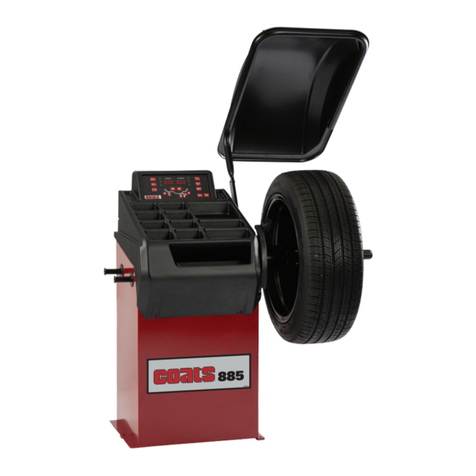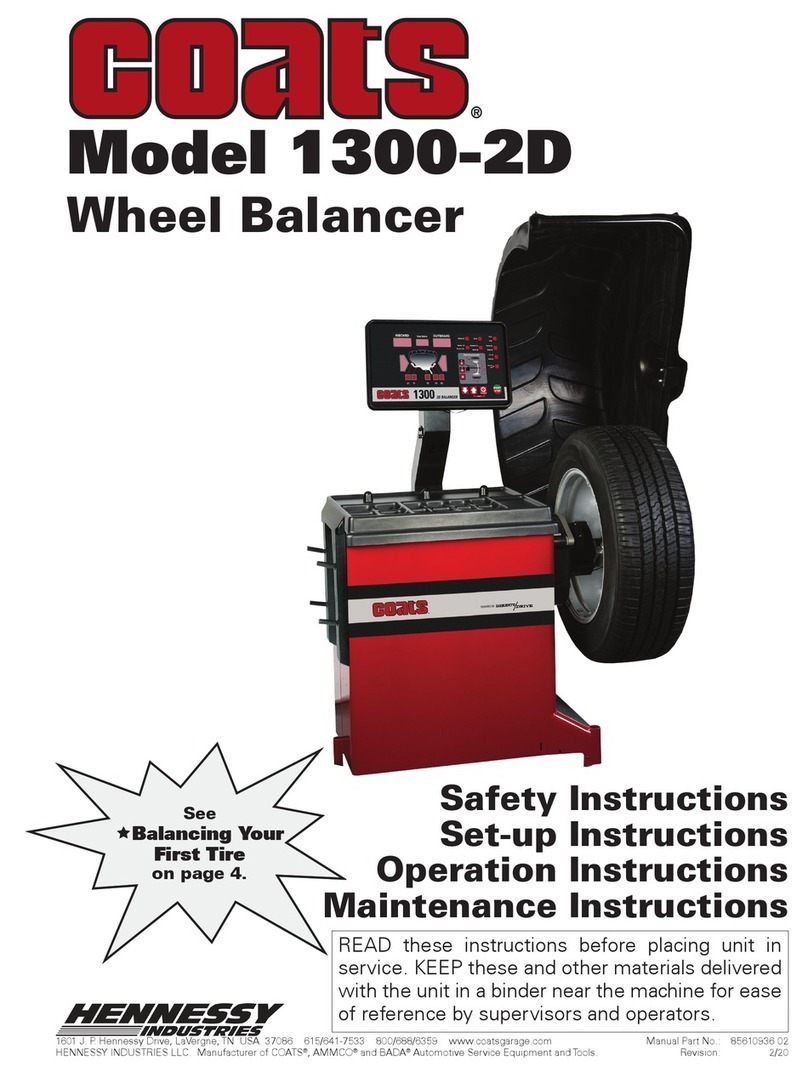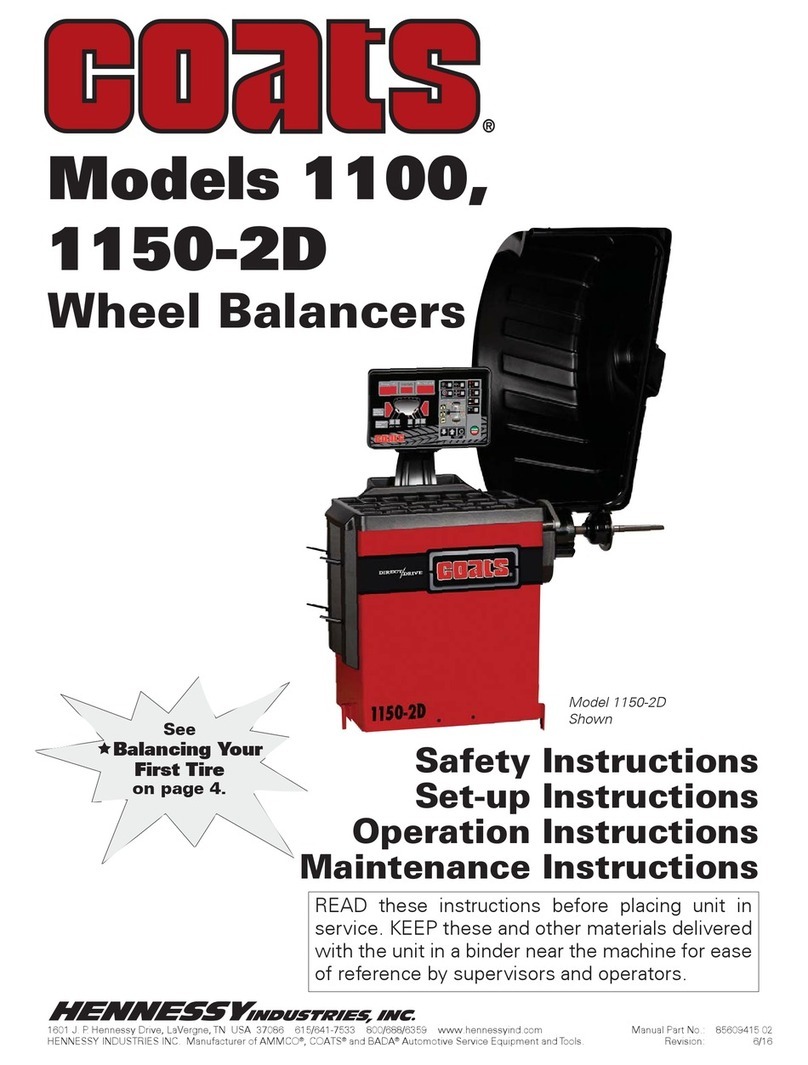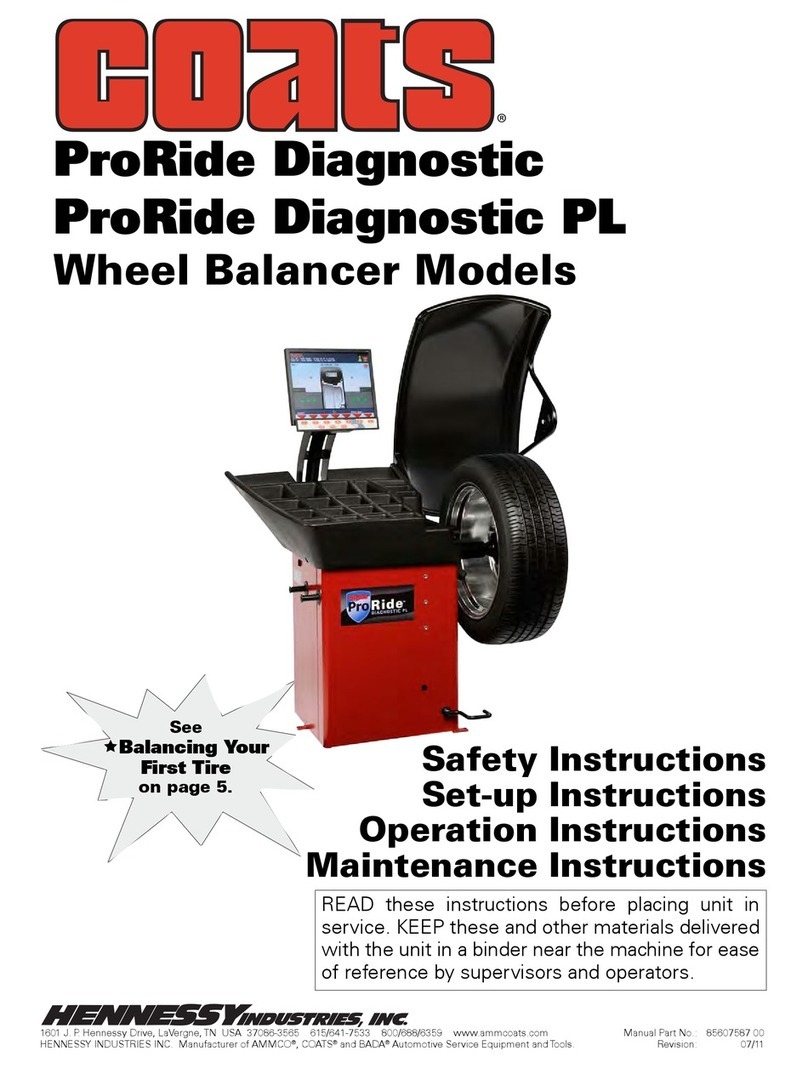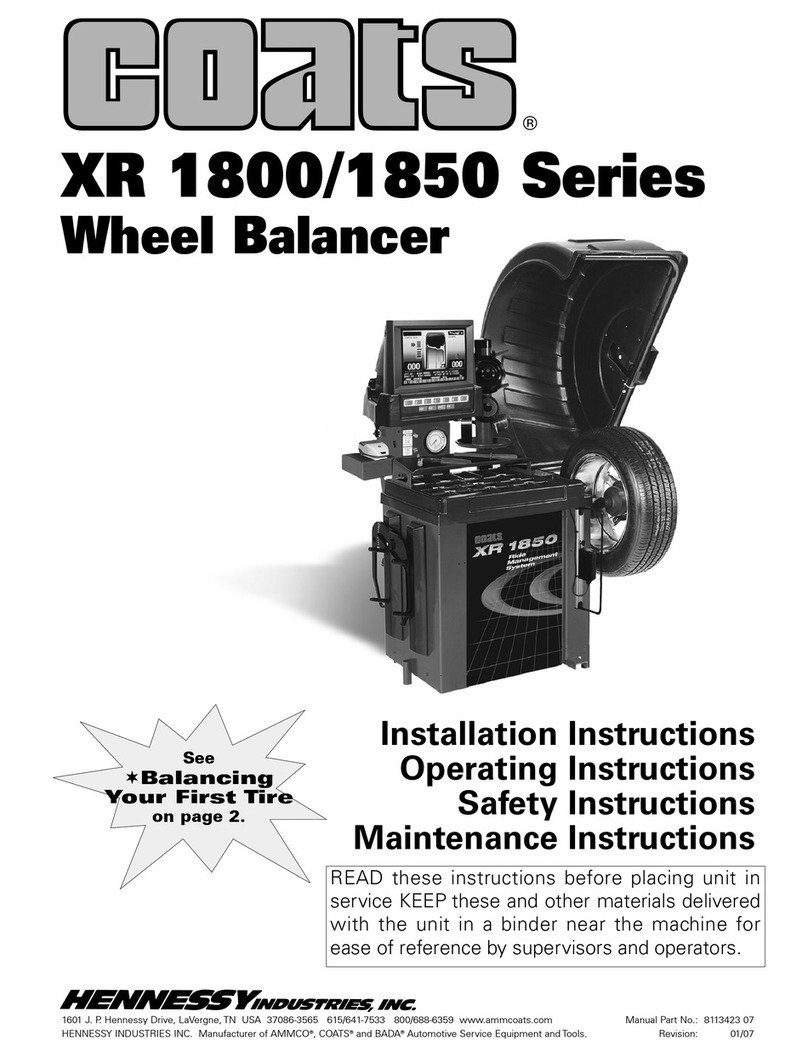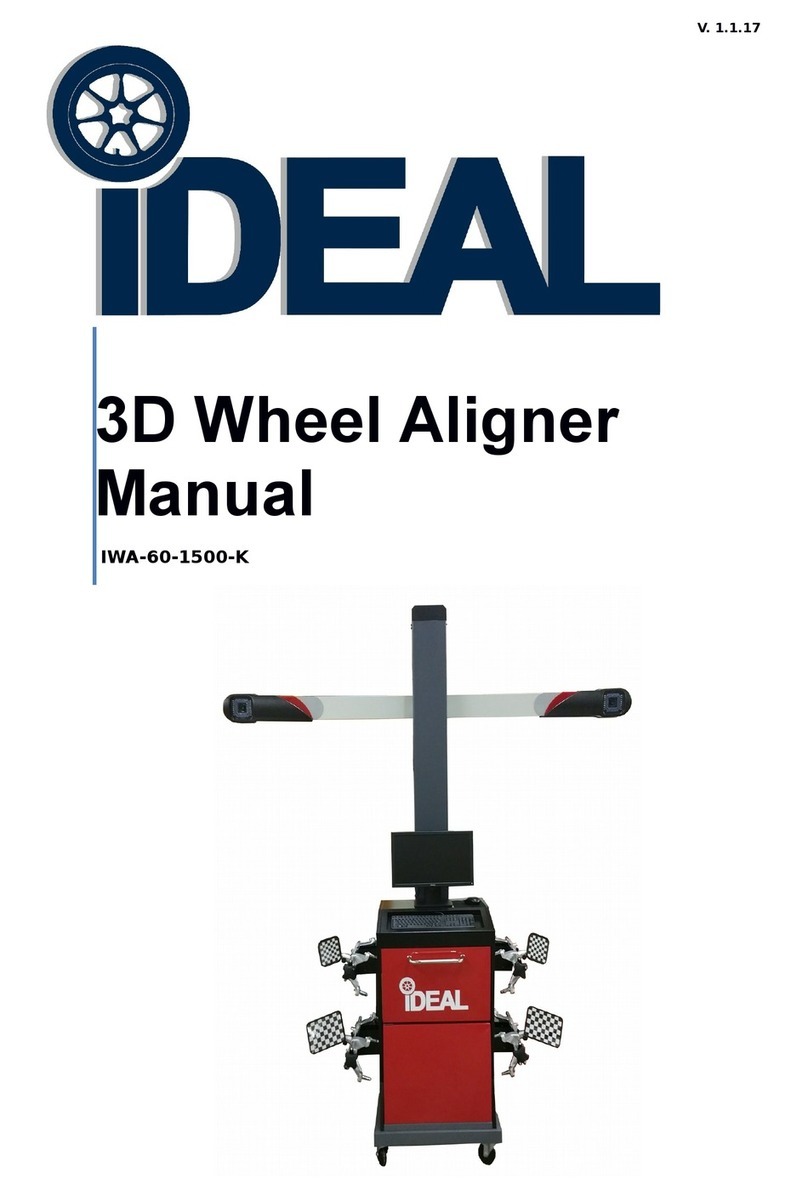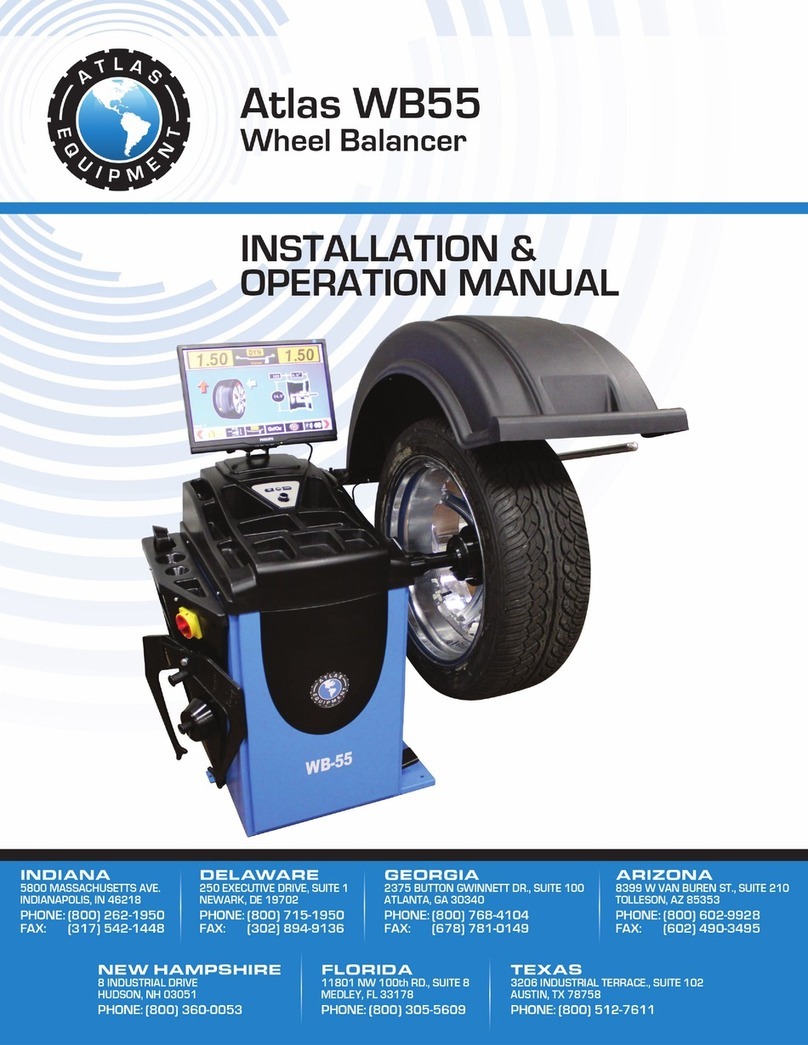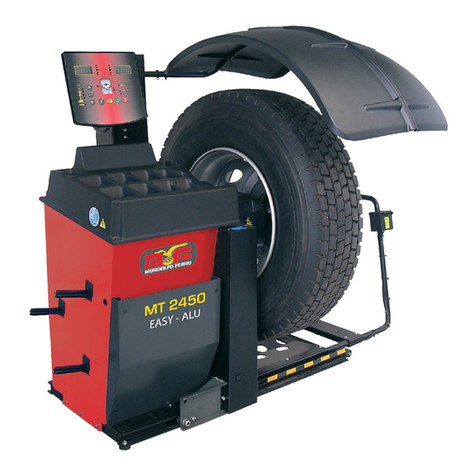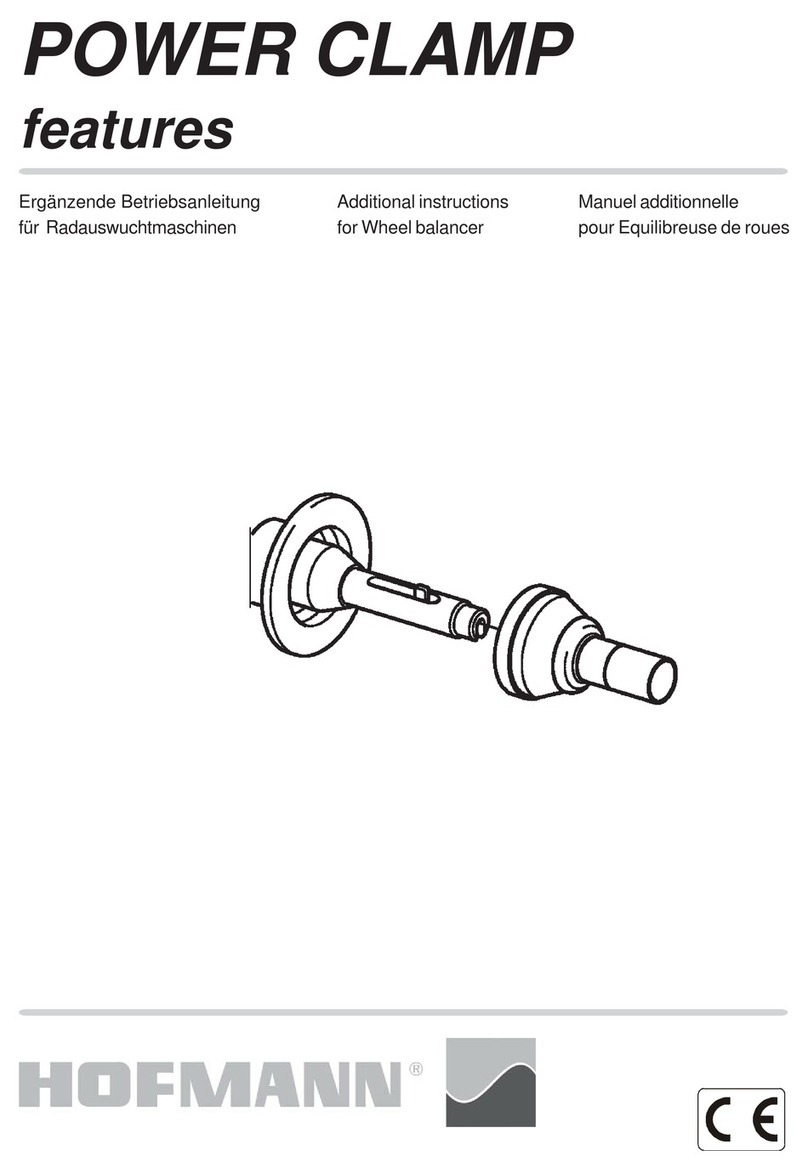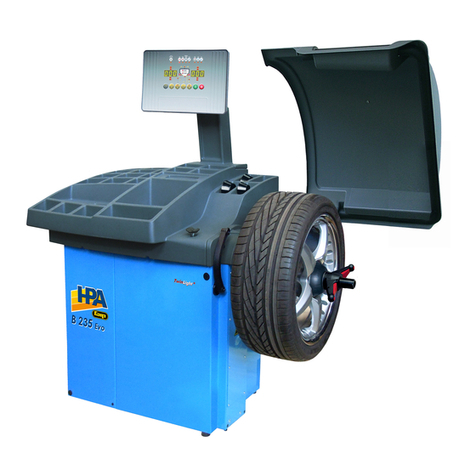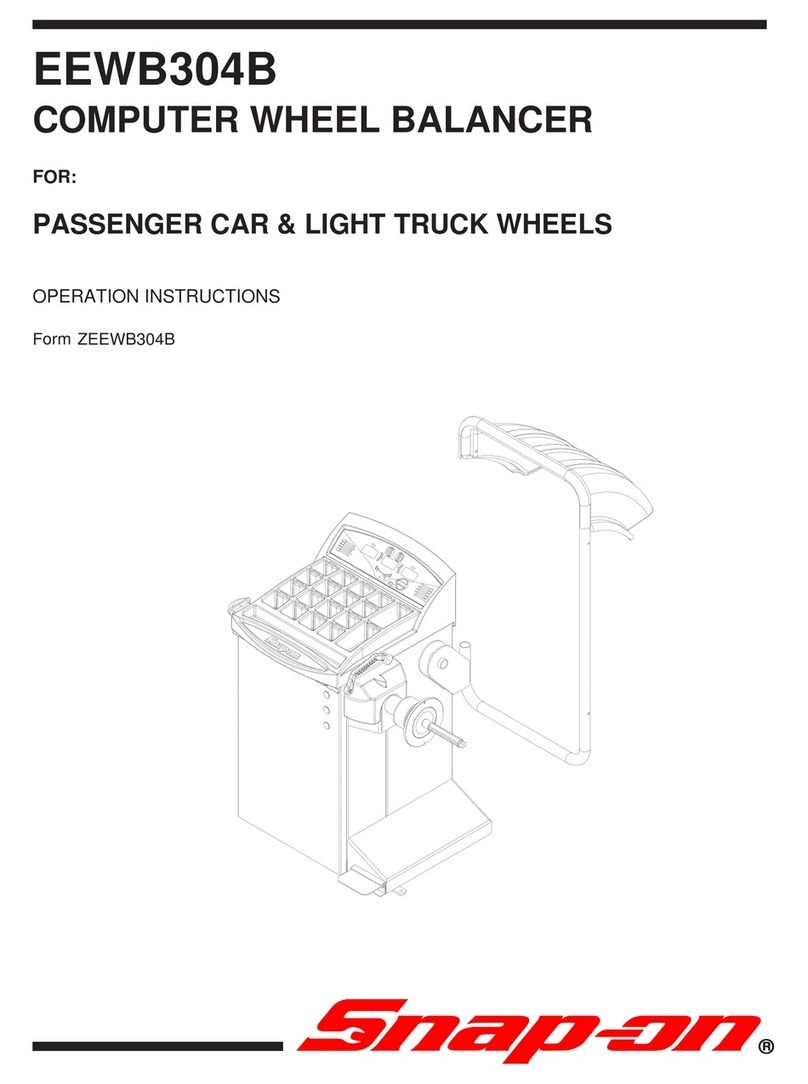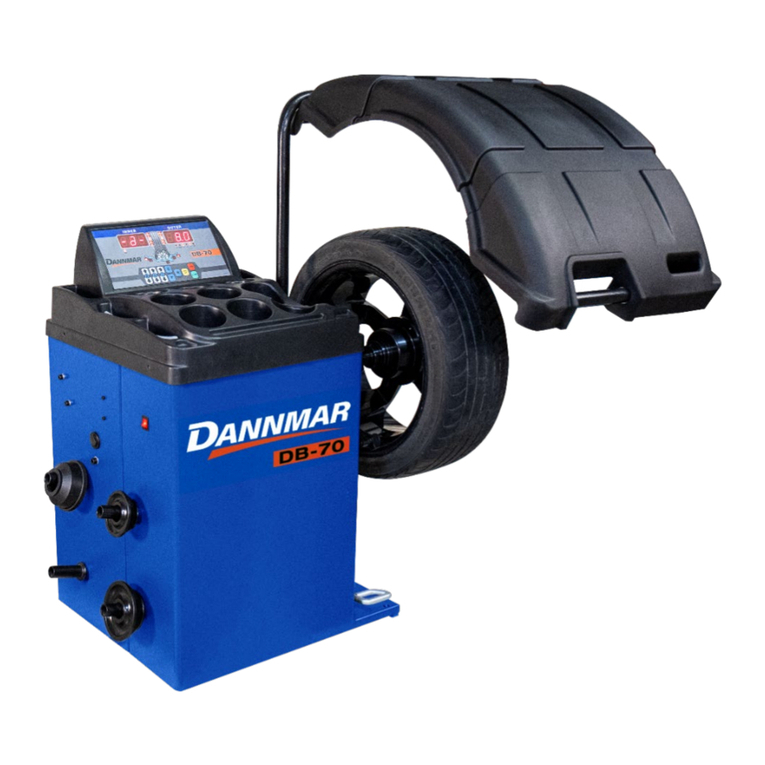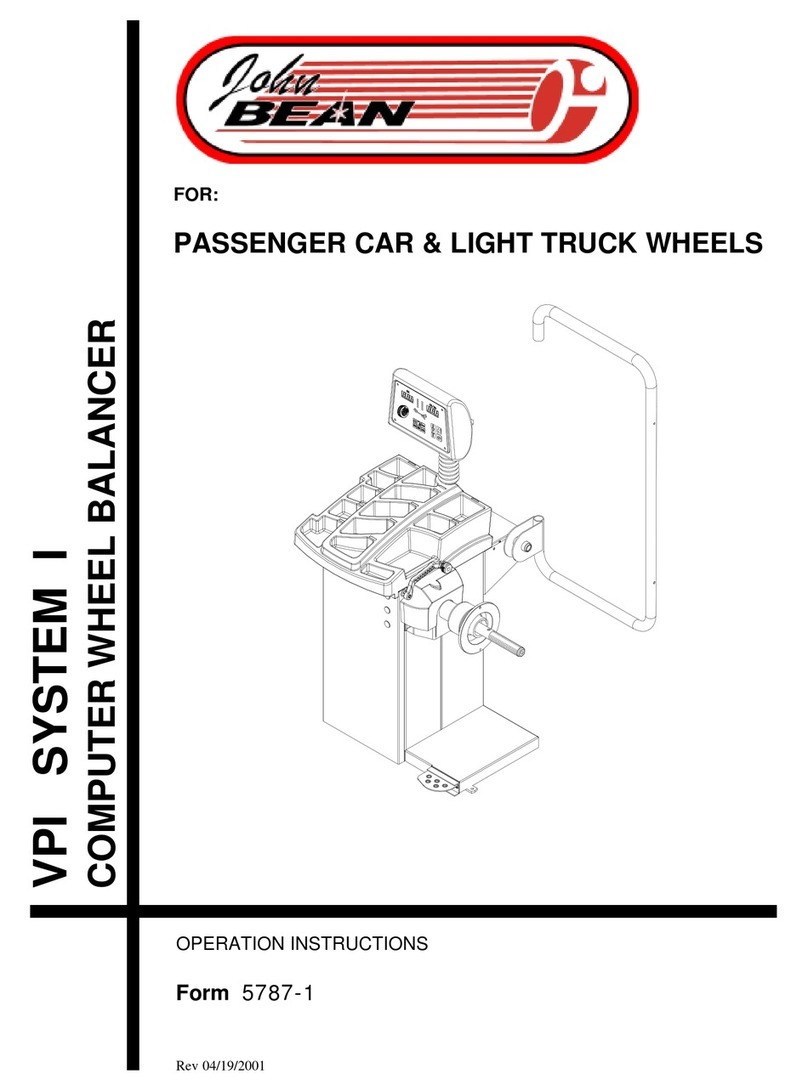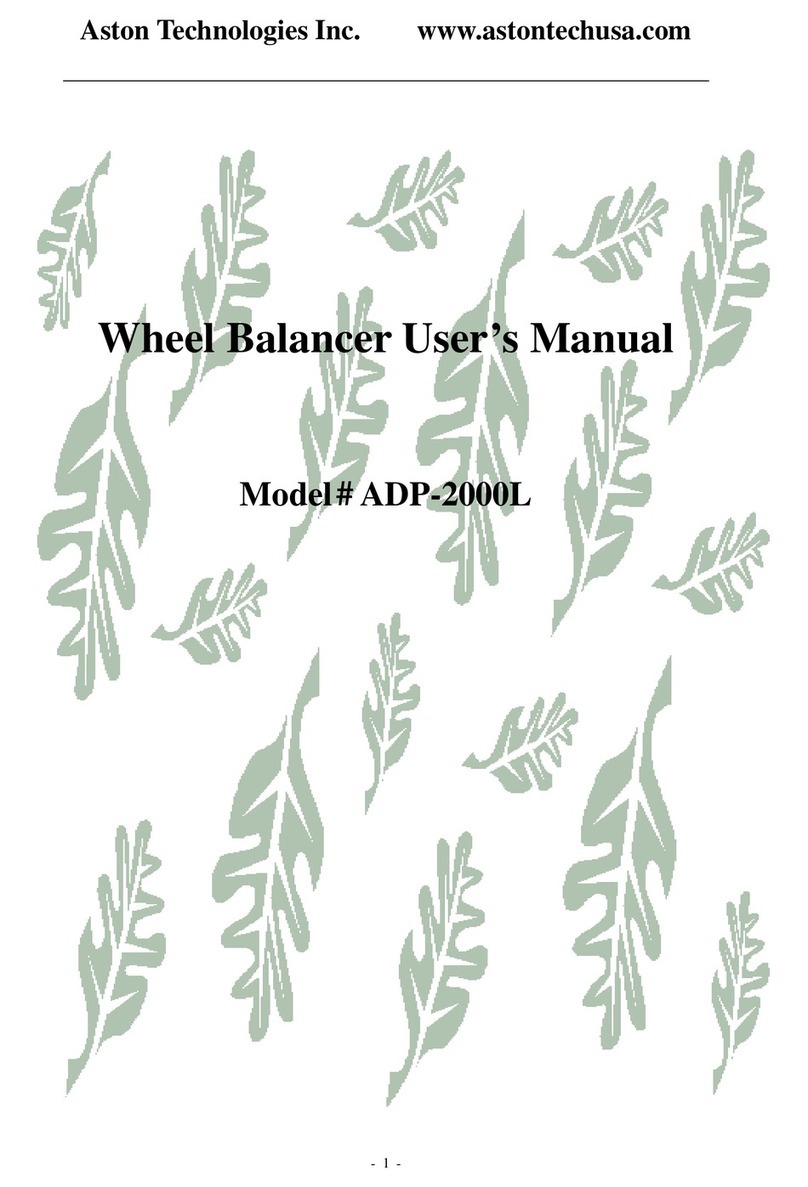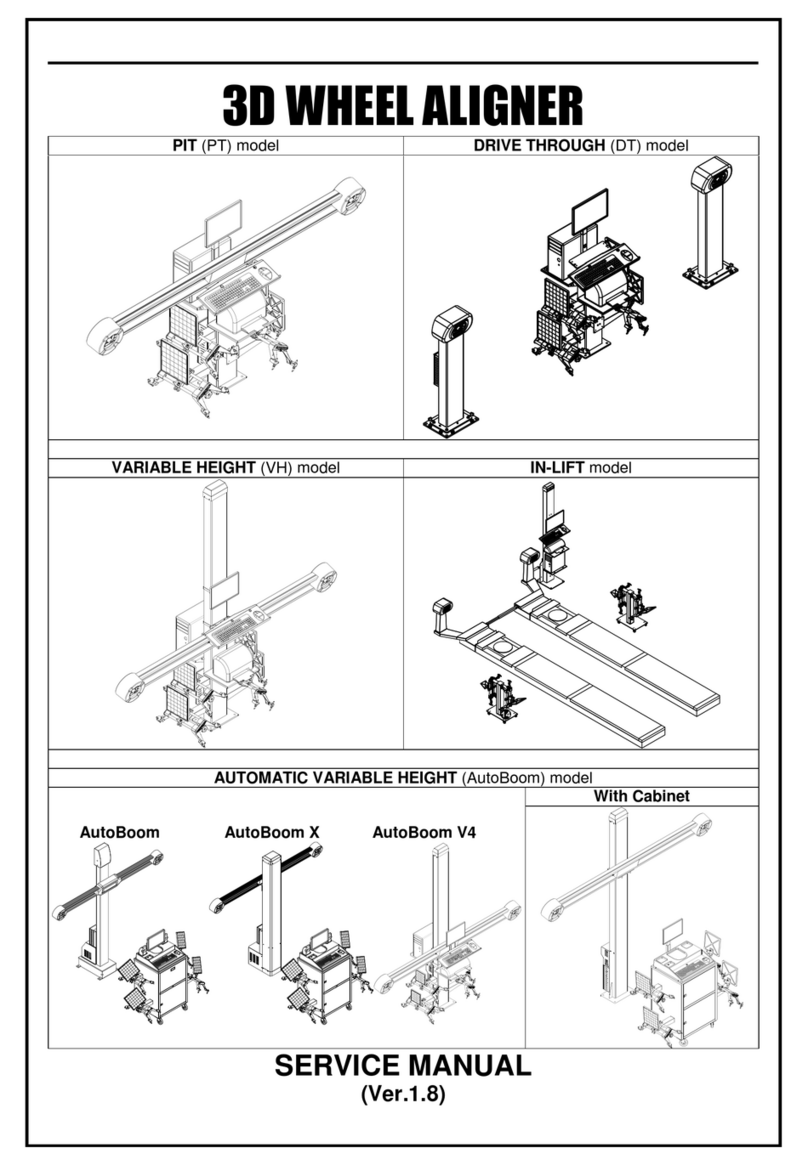Service Manual — COATS Models 950/950 ProRacer/1025/1050/1055 • iii
Contents
Introduction . . . . . . . . . . . . . . . . . . . . . . . . . . . .1
Safety Notes . . . . . . . . . . . . . . . . . . . . . . . . . . .1
Servicing . . . . . . . . . . . . . . . . . . . . . . . . . . . . . .1
Equipment Needed . . . . . . . . . . . . . . . . . . . . . .1
Voltage & Phase Checking Procedure . . . . . . .2
Preliminary Inspection . . . . . . . . . . . . . . . . . . .3
Functional Checks
Operational Check . . . . . . . . . . . . . . . . . . . . . . . . . . .3
Accuracy Check (Plane Separation) . . . . . . . . . . . .3 - 4
Rotational Check (Use a Hub Centric Wheel) . . . . . . .4
Calibration Procedures
Weight Sensor Calibration . . . . . . . . . . . . . . . . . . . . .4
A & D Arm Calibration (Code 10) . . . . . . . . . . . . . .4 - 5
Stop-On-Top Calibration (Code 20/21) . . . . . . . . . . . .5
*Distance Gauge Tape Placement (Optimize A) . . . . .5
Error Codes . . . . . . . . . . . . . . . . . . . . . . . . .5 - 6
*Function Codes . . . . . . . . . . . . . . . . . . . . . .6 - 7
Troubleshooting Section for Models 950, 1025,
1050, & 1055 Balancers . . . . . . . . . . . . . . .7 - 16
Introduction . . . . . . . . . . . . . . . . . . . . . . . . . . . . . . . .7
Fan Motor Does Not Run (Contactor Model) . . . . . . .8
Accuracy Problems (Plane Separation) . . . . . . . . . . . .8
Rotational Problems (Contractor & Motor
Controller Model) . . . . . . . . . . . . . . . . . . . . . . . . . . .9
Repeatability Problems (Contractor & Motor
Controller Model) . . . . . . . . . . . . . . . . . . . . . . . . . . .10
Display Does Not Light (Contactro Model) . . . . . . . .11
Balancer Does Not Cycle (Contactor Model) . . .12 - 13
Balancer Does Not Brake (Contactor Model) . . .14 - 15
A & D Arm Problems . . . . . . . . . . . . . . . . . . . . . . . .16
Checking Procedures
*Bridge Rectifiers . . . . . . . . . . . . . . . . . . . . . . . . . .17
*Optical Encoder (Code 44) . . . . . . . . . . . . . . . . . . .17
*Motor Circuit Testing . . . . . . . . . . . . . . . . . . . . . . .17
*Motor Circuit Diagram . . . . . . . . . . . . . . . . . . . . . .18
*Piezo Output . . . . . . . . . . . . . . . . . . . . . . . . . . . . .19
Replacement Procedures Section for Models
950, 1025, 1050, & 1055 Balancers . . . . . .20 - 25
Front Panel/Printed Circuit Board Assembly . . . . . . .20
Contactor Coil Resistance Measurement . . . . . . . . .20
Front Panel/Printed Circuit Board Assembly
Replacement . . . . . . . . . . . . . . . . . . . . . . . . . . . . . .20
Touch Panel/Aluminum Back Panel and PCB Assembly . . . .20
Hood Magnet . . . . . . . . . . . . . . . . . . . . . . . . . . . . .21
Magnetic Hood Switch . . . . . . . . . . . . . . . . . . . . . .21
*Mechanical Hood/Interlock Switch . . . . . . . . . . . . .21
On/Off Switch . . . . . . . . . . . . . . . . . . . . . . . . . . . . .21
Circuit Breakers . . . . . . . . . . . . . . . . . . . . . . . . . . . .21
Transformer . . . . . . . . . . . . . . . . . . . . . . . . . . . . . . .22
Contactor . . . . . . . . . . . . . . . . . . . . . . . . . . . . . . . .22
Auxiliary Contactor Block . . . . . . . . . . . . . . . . . . . . .22
Bridge Rectifiers . . . . . . . . . . . . . . . . . . . . . . . . . . .22
A & D Arm Assembly . . . . . . . . . . . . . . . . . . . . . . .23
Fan Motor Assembly . . . . . . . . . . . . . . . . . . . . . . . .23
Rotary Shutter . . . . . . . . . . . . . . . . . . . . . . . . . . . . .23
Optical Encoder Assembly . . . . . . . . . . . . . . . . . . . .23
Drive Motor Assembly . . . . . . . . . . . . . . . . . . . . . . .24
Piezo Assembly . . . . . . . . . . . . . . . . . . . . . . . .24 - 25
Capacitor Assembly . . . . . . . . . . . . . . . . . . . . . . . . .25
Capacitor . . . . . . . . . . . . . . . . . . . . . . . . . . . . . . . . .25
Signal Harness . . . . . . . . . . . . . . . . . . . . . . . . . . . .25
Repair Procedures for the A & D Arm Assembly
A Pulley Removal . . . . . . . . . . . . . . . . . . . . . . . . . .26
A Pulley Installation/Adjustment (Code 10) . . . . . . . .26
A Potentiometer Replacement . . . . . . . . . . . . . . . . .26
D Pulley Removal . . . . . . . . . . . . . . . . . . . . . . . . . .26
D Pulley Installation/Adjustment (Code 10) . . . . . . . .27
D Potentiometer Replacement . . . . . . . . . . . . . . . . .27
*Motor Service Kit Instructions . . . . . . . . . . .28
*950 Pro Racer . . . . . . . . . . . . . . . . . . . . . . . . .28
*950 Pro Racer Wiring Diagram . . . . . . . . . . . . . . . .29
*950 Wiring Diagram (Contactor Style) . . . . .30
*1050 Wiring Diagram (Contactor Style) . . . .31
*Solid State Wiring Diagrams &
Troubleshooting Guides . . . . . . . . . . . . . . . . .32
For units produced after 1/1/98 . . . . . . . . . . . . . . . .32
Mechanical Hood Switches . . . . . . . . . . . . . . . . . . .32
Mechanical Hood Switch Diagram . . . . . . . . . . . . . .33
*1050 Wiring Diagram (Motor Controller
Style/Magnetic Switches) . . . . . . . . . . . . . . . . . . . .34
*1050 Wiring Diagram (Motor Controller
Style/Mechanical Switches) . . . . . . . . . . . . . . . . . . .36
*Motor Controller Test Box #8112708 . . . . . . . . . . .38
*Display Does Not Light (Solid State Motor
Controller Model) . . . . . . . . . . . . . . . . . . . . . . . . . .39
*Balancer Does Not Cycle (Solid State Motor
Controller Model) . . . . . . . . . . . . . . . . . . . . . . . . . .40
*Balancer Does Not Brake (Solid State Motor
Controller Model) . . . . . . . . . . . . . . . . . . . . . . . . . .41
*PCB Checklist Addendum . . . . . . . . . . . . . . .42
Diode Test . . . . . . . . . . . . . . . . . . . . . . . . . . . . . . . .42
IC Test . . . . . . . . . . . . . . . . . . . . . . . . . . . . . . . . . . .42
*Glossary of Terms . . . . . . . . . . . . . . . . . . . . .43
*This manual has been updated to include all related
models. Items that are new are high lighted by an asterick
(*) for your convenience.




